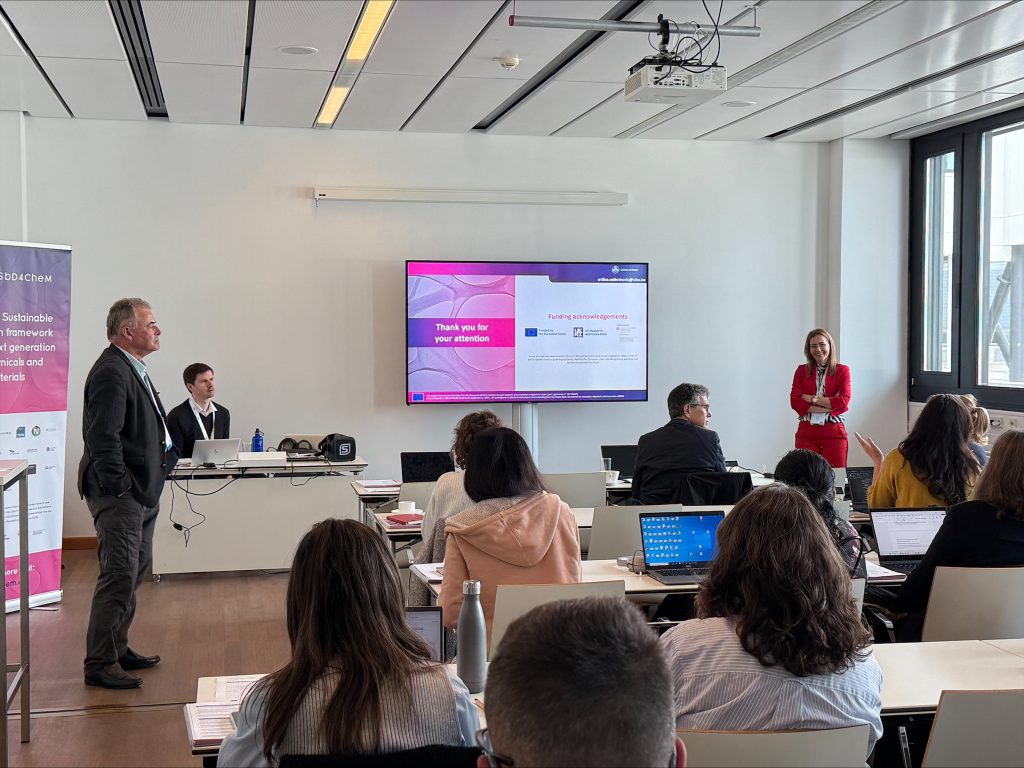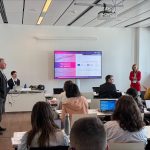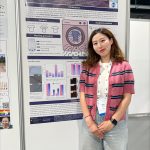
From 11-15 May 2025 took place the SETAC 2025, the 35th Annual Meeting of the Society of Environmental Toxicology and Chemistry in Europe, at the Austria Center in Vienna.
Under the overarching theme “Innovation for Tomorrow: Progress in Safe and Sustainable Concepts”, the conference emphasized the need for integration of cutting-edge innovations with safety and sustainability considerations, through implementation and expansion of the Safe and Sustainable by Design (SSbD) thinking, as well as it application beyond the development of new molecules and products (e.g., also to cities, land use and landscapes). The conference attracted roughly 3000 people to the capital of Austria, from many various stakeholder groups, i.e., academia, industry, innovators, EU institutions, national authorities, etc.
Several SSbD4CheM partners participated in the conference (ITENE, Edelweiss Connect, Wood K plus – Kompetenzzentrum Holz GmbH, BNN) and spread the word about SSbD4CheM in a SSbD training session, three posters as well as one oral presentation:
On Sunday, May 11th, the pre-conference kicked off with a training course on “Safety and Sustainability Assessment in the Context of EU SSbD Framework”, organized by ITENE (Carlos Fito), Wood K plus (Ivana Burzic), Edelweiss Connect (Barry Hardy) and BNN (Matiss Reinfelds), jointly between the EU-funded projects SSbD4CheM, BIO-SUSHY and AlChemiSSts.
On Tuesday, May 13th, Xiaoyu Zhang from VITO talked about “Tailored analytical approaches for safety assessment” in session 3.01 “Innovative Analytical Methodologies to Support Next-Generation Risk Assessment and Early Warning”. Her study aims at applying different analytical techniques for conducting safety assessments of materials in the textile industry during the product life cycle. To achieve this, a set of different analytical technologies such as Pyrolysis Chromatography/Mass Spectrometry (Pyr-GC-MS), Dynamic Light Scattering (DLS), Nanoparticle Tracking Analysis (NTA), Atomic Force Microscopy (AFM), and Scanning Electron Microscopy (SEM) were used.
Also on Tuesday, May 13th, Maria Molnar (Wood K plus) had a poster in the session 3.01 “Innovative Analytical Methodologies to Support Next-Generation Risk Assessment and Early Warning“. Under the title “Safe and Sustainable by Design framework for the next generation of Wood Plastic Composites for automotive industry”, Maria presented a promising analytical method to support the development of safe and sustainable Wood Plastic Composites (WPCs) for car interior trims. To ensure the health and safety of workers and consumers, it’s crucial to reduce emissions into indoor air. As a result, there is a growing need for analytical tools suitable for the early R&D phase. To meet this, an instrumental setup for rapid screening of Volatile Organic Compounds (VOCs) under realistic conditions was developed. It combines micro emission test chambers with a Proton-Transfer-Reaction Time-of-Flight Mass Spectrometer (VOCUS PTR/TOF-MS). Her presentation shared promising first results and illustrated how this technique can contribute to healthier, more sustainable design choices in the automotive industry.
On Wednesday, May 14th, Barry Hardy (Edelweiss Connect) co-chaired the session 6.04 “Methods and Tools Enabling Safe and Sustainable by Design (SSbD) Strategies“ together with Bernd Nowack (EMPA), Maja Halling (IVL), and Zhanyun Wang (EMPA), highlighting the progress in tools and methods supporting the EC’s SSbD framework—advancing safety, sustainability, and functionality across the innovation lifecycle. Topics included the use of NAMs, modelling in data-poor contexts, AI-driven insights, and integrated assessment strategies. In this session, Barry had a poster entitled “Streamlining Safe and Sustainable by Design Practices: A Knowledge-integrated Toolbox and Workflow Approach supporting Innovative and Safer Product Design”. He presented on SSbD4CheM’s work including a variety of tools, AI-assistance, guidance manuals, databases created using harmonised data templates and FAIR data, incorporated into end user software and workflow system implementing SSbD tasks and decisions.
Also on Wednesday, May 14th, Caitlin Ahern from BNN, turned the focus to science communication in session 6.06 “Communication for Tomorrow: From Experimental Design Towards Societal Impact” with her oral presentation. Under the title “Getting Beyond the Bubble: Measuring Effectiveness of Outreach Activities for SSbD-Related EU Projects”, Caitlin assessed social media activities to reach out to a wider community, presenting SSbD4CheM as an example of successful practices.
Below some impressions of the SETAC25 including a video!











